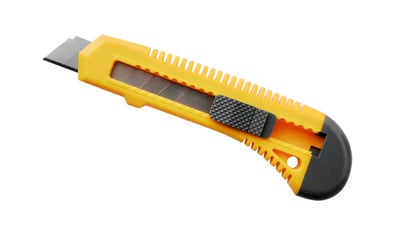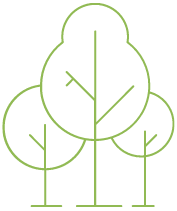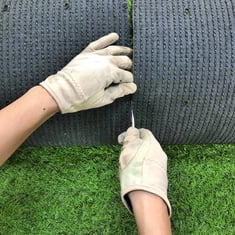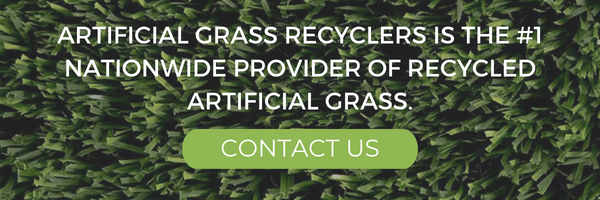It’s easy to cut artificial turf the wrong way. It’s much harder and more expensive to fix the resulting problems.
To cut artificial grass correctly, you need sharp cutting tools, safety gear, and measuring instruments. A professional approach to cutting artificial turf can save you money while reducing waste and speeding up installation.
Let’s look at these effective ways of cutting artificial grass.
What can you use to cut artificial turf?
 Artificial turf is highly durable. However, it shouldn’t be hard to cut with the right instruments. To remove excess turf or cut around corners, trees, posts, and other obstacles, you can use:
Artificial turf is highly durable. However, it shouldn’t be hard to cut with the right instruments. To remove excess turf or cut around corners, trees, posts, and other obstacles, you can use:
- Heavy-duty scissors
- Carpet knife
- Shears
- Snips
- X-Acto knife
- Utility knife
All of these instruments are great for precision turf cutting. The question is: how sharp are they? Sharpening the blade is essential to achieving a precise cut. If you haven’t used the tool in a while, consider sharpening it before the job.
A dull knife can damage the turf, rip through it, and significantly increase installation time. If your instrument is old, sharpening may not help. Consider replacing the blade.
Important: always wear gloves when cutting artificial turf. A pair of garden gloves can prevent unpleasant cuts on your hands.
What do you need to do before cutting turf?
Getting preparations right is vital to reducing turf waste, hiding seams, and avoiding unnecessary expenses.
Trim the Backing
When you look at the turf roll, you can usually see that the backing is a bit longer than the artificial grass itself. This excess backing that extends past the grass is called the selvedge. If you don’t remove the selvedge, you can end up with a “mohawk effect.”
The mohawk effect occurs when artificial grass blades along the edge of each synthetic turf piece push together. This creates a line of dense grass that appears bent and rises higher than the rest of the blades.
To avoid this effect, you need to trim the roll three stitches past the selvedge.
Measure Your Design
Measure your design to avoid waste and make the grass surface look as natural as possible. If you have many elements, such as corners, stones, and edges, measure them at least twice before making the first cut.
1. How to Cut a Straight Line
By cutting a straight line, you are ensuring the solid appearance of your artificial turf and making it easier to join turf elements, especially when you need to work around obstacles with 90-degree angles.
When you turn the roll of artificial turf over, you can see the stitches. These stitches hold the artificial grass blades, so cutting through them can weaken the turf. That’s why it’s important to cut around the stitches. You’ll be cutting from the back of the turf, so you’ll be able to see the stitches.
The straight line is the easiest cut to achieve. All you need to do is cut between the stitches. If you plan to put another piece of turf next to the one you are cutting, you must keep the distance between the stitches the same.’
If you can maintain the distance between the two stitches, the two pieces of turf can fit together perfectly. However, you would still need to secure the two sides of the turf carefully to minimize visibility.
2. How to Cut an S-Seam
If you want to create s-seams to join the two pieces of turf together (the method is also called “serpentine seam”), you will need a specially-devised framing tool. All expert synthetic turf installers have one, which is available for rent or purchase at most major home improvement centers.
You place the tool on the backside of your turf according to the instructions and use a sharp blade to cut s-seams. Then, you do the same for the other piece of turf.
Using the right tools and cutting the turf carefully can prevent the mohawk effect. With the s-seam method, the two parts overlap and significantly reduce the visibility of the seams.
3. How to Cut Up to an Edge
If your synthetic turf is coming up against a patio or a garden element, you need to cut it up to an edge.
- Place the turf over the edge
- Hold the knife in one hand
- Use the other hand to pull back the piece of the turf you need to remove to expose backing
- Start cutting in small segments
- Keep pulling the excess piece of turf up and back while cutting
If the turf runs up against a wall, you need to fold the excess turf away from the wall and toward you. Then, start cutting horizontally while keeping the turf folded. After cutting every few inches, lay the turf against the wall to check the fit.
4. How to Cut Around a Tree
 When installing artificial grass, trees, décor, and other elements become obstacles. To cut around a tree, you need to:
When installing artificial grass, trees, décor, and other elements become obstacles. To cut around a tree, you need to:
- Cut a straight line from the edge of the turf to the tree’s trunk
- Cut a letter “x” at the side of the tree trunk
- Slide the artificial grass in
- Carefully cut a circle around the trunk
- Use seam tape to keep the seam together
The key to installing artificial turf around obstacles is carefully cutting turf away piece by piece. Don’t make one large cut at once. A mistake could cost you a lot of of turf or cause a pronounced seam. Cut pieces away carefully until you achieve the desired effect.
5. How to Cut a Golf Hole in Synthetic Grass
 When it comes to installing artificial grass, golf fields may seem the toughest since they have a variety of irregular shapes. When cutting your artificial grass to accommodate such needs, you need to avoid hurting the turf’s integrity.
When it comes to installing artificial grass, golf fields may seem the toughest since they have a variety of irregular shapes. When cutting your artificial grass to accommodate such needs, you need to avoid hurting the turf’s integrity.
Cutting a golf hole may seem complicated. However, with the right approach, you can make a precise cut without damaging the turf more than you need to and preventing blades from falling out.
For golf holes, you need to:
- Install the turf
- Mark the holes with chalk
- Cut an “x” in the middle of the marked circle
- Cut away the turf piece by piece until the cup (installed in advance) becomes visible
Cutting circles is often the hardest part of artificial turf installation since it requires the uttermost precision. Make sure the cutting tool is well-sharpened.
The Best Way to Cut Synthetic Grass
It may seem that cutting straight lines is the easiest and the best way to cut your artificial turf. However, the chances of creating visible seams and a mohawk effect can be high.
The best way to cut artificial grass is with a serpentine (s-seam) cut.
With an s-seam, the results improve in several ways:
- S-seams hide the seam area by blending the pattern and color of the artificial grass
- S-seams are less prone to the mohawk effect than straight cuts
- S-seams are less visible than straight seams, especially on large areas of the turf.
While much more beneficial than straight cuts, s-seams are harder to implement. They require special tools and a professional approach. If you want to take advantage of invisible seams, you may need to consider hiring artificial turf installation experts.
Tags:
Installing Recycled TurfMar 7, 2023 12:06:11 PM



